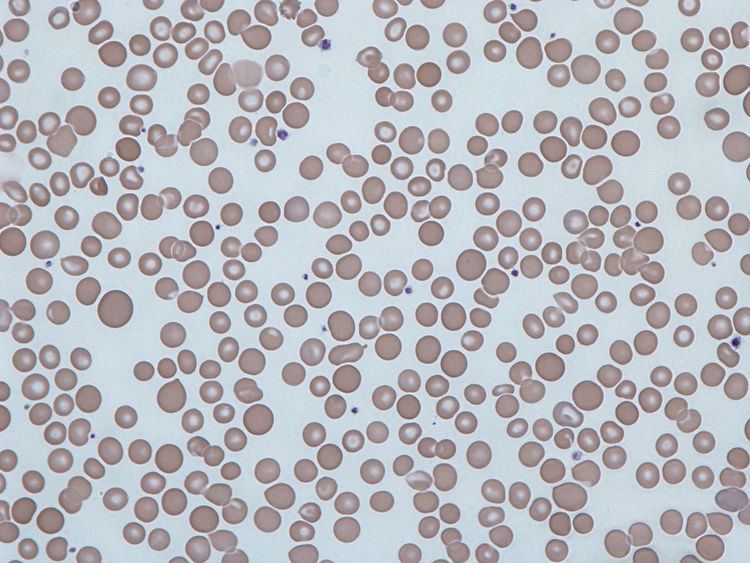ICD-10 R71 DiseasesDB 725 | ICD-9-CM 790.09 | |
 | ||
Anisocytosis is a medical term meaning that a patient's red blood cells are of unequal size. This is commonly found in anemia and other blood conditions. False diagnostic flagging may be triggered by an elevated WBC count, agglutinated RBCs, RBC fragments, giant platelets or platelet clumps. In addition, it is a characteristic feature of bovine blood.
The red cell distribution width (RDW) is a measurement of anisocytosis and is calculated as a coefficient of variation of the distribution of RBC volumes divided by the mean corpuscular volume (MCV)
Types
Anisocytosis is identified by RDW and is classified according to the size of RBC measured by MCV. According to this, it can be divided into
Increased RDW is seen in iron deficiency anemia, thalassemia major (Cooley's anemia), thalassemia intermedia and myelodysplastic syndromes
